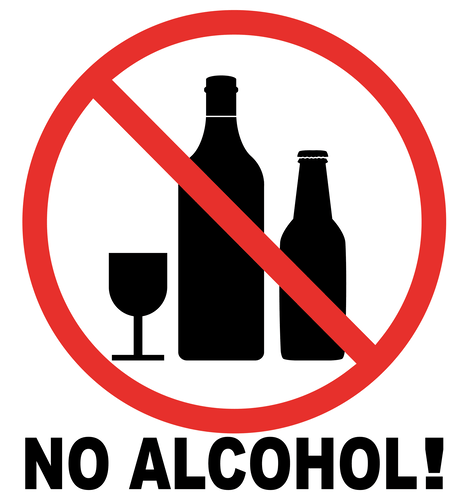It can be triggered by factors such as stress, infections, or certain foods. One practical application of cannabis is dronabinol, what is chs weed a THC-based synthetic drug. It interacts with the ECS to stimulate the brain’s regions responsible for hunger and the control of nausea and vomiting. The US Food and Drug Administration approved this THC oral medication back in 1985 to treat instances of anorexia nervosa, nausea, and weight loss in AIDS and cancer patients.
Understanding Cannabinoid Hyperemesis Syndrome (CHS) Symptoms and Treatment
- Cannabis legalization should include balanced details on its benefits and potential risks.
- 11-OH-THC is psychoactive and shares similar potency to THC, whereas THC-COOH is non-psychoactive and has anti-inflammatory effects 27-29.
- “Hyperemesis” is a medical term used to describe severe and persistent vomiting; for example, hyperemesis gravidarum refers to the severe form of nausea and vomiting that may occur during pregnancy.
- If you’re struggling with CHS or think you might have it, don’t go it alone.
- Therefore, in case of concerns for cannabinoid hyperemesis syndrome, seeking medical advice or professional help can be very useful.
Yes, there’s no evidence to show that CHS is a permanent condition with symptoms persisting even after giving up your favorite flavor. So little is known about CHS that no medicines are available to solve the problem. As of this writing, the only way to comprehensively cure this condition is to take a break from consuming marijuana-based products. Although it’s not the best cannabis marketing tactic, there’s no doubt that CHS is connected to the ingestion of cannabis. Whether it’s caused by THC, CBD, or another minor cannabinoid remains to be seen. Nobody likes a bad trip, but some people can have worse trips than others due to a condition known as Cannabinoid Hyperemesis Syndrome (CHS).
How Do I Know If I Have CHS?
Cannabis hyperemesis syndrome (CHS) is a condition that leads to repeated and severe bouts of nausea, vomiting, and abdominal pains. Symptoms of CHS usually appear after 10 to 12 years of chronic use. Cannabinoid hyperemesis syndrome is divided into three different phases, which are described in a 2013 article from Hospital Pharmacy journal. The initial phase—also known as the prodromal phase—is characterized by mild symptoms and can last for months or years.
- Although laboratory examinations and advanced imaging studies (e.g., CT scans, ultrasounds) are often negative, they play a crucial role in ruling out other conditions.
- Additional treatments include rehydration via intravenous fluids and proton pump inhibitors to reduce stomach acid.
- There is a clear need for more robust studies to assess the prevalence, demographics, and long-term outcomes of CHS in a variety of populations.
- In contrast, patients who continued using cannabis experienced persistent symptoms.
- The most effective treatment for CHS is complete cessation of cannabis use.
The Rome IV criteria for cyclic vomiting syndrome are particularly relevant here, as CHS shares overlapping symptoms. Accurate diagnosis is vital; misdiagnosis can lead to inappropriate treatments, worsening the patient’s condition and prolonging suffering. Alarmingly, statistics indicate that misdiagnosis rates for CHS can be as high as 30%, with many patients initially misidentified with other gastrointestinal issues. For most people, the early signs and symptoms of cannabinoid hyperemesis syndrome kick in only after regular, heavy marijuana use for at least a couple of years. Due to the rise in CHS prevalence, likely from cannabis legalization in more states, public health outreach programs can play a crucial role in bringing awareness and prevention to this condition.
Long-term Wellness (3+ Months)

It is mainly utilized for treating agitated patients and causes sedative effects at doses of 2 to 10 mg intravenously, with a maximum daily dosage of 30 mg 76. Haloperidol is a D2 receptor antagonist that acts within the mesolimbic and mesocortical pathways. Its sedative and anti-emetic properties help to manage hyperemesis in CHS patients.
- Following the hyperemetic phase is the recovery phase, in which patients resume normal eating patterns and symptoms begin to improve.
- The numbers indicate that developing CHS is very uncommon even among those who consume cannabis regularly.
- A unique aspect of CHS is that individuals often find temporary relief from their discomfort by taking hot showers or baths, a behavior that has become a defining feature of this condition.
- For a more comfortable recovery, some individuals consider luxury rehab centres that provide a supportive environment with additional amenities.
Hyperemetic phase
It’s important to seek medical advice for proper management and avoid further cannabis use to prevent recurring episodes. If you’re a long-term cannabis user experiencing cyclic vomiting, abdominal pain, and relief with hot showers, consult a healthcare provider for a proper diagnosis. This barrier to disclosure could result in delayed diagnosis of CHS and other cannabis-related health issues, potentially leading to prolonged suffering or more severe complications. Policies promoting a non-judgmental, open discussion about cannabis use in healthcare settings could help overcome this barrier.

By leveraging available resources and professional help through Leafy Mate, you can effectively manage your symptoms and work towards a healthier future. Organizations focused on marijuana health offer counseling and rehabilitation services specifically designed for marijuana users. These services not only address the urgent signs of CHS but also help individuals navigate the complexities of marijuana use and its related health risks. While marijuana has significant analgesic effects, statistics reveal that these do not surpass those of conventional medications like codeine, underscoring the need Sobriety for moderation.
Treatment Services & Modalities
Additionally, using topical capsaicin cream at concentrations of 0.025% to 0.15% has been shown to significantly reduce emergency department stay from an average of 7.09 hours to 4.83 hours. This underscores the importance of effective treatment options and their positive implications for patient care. Many people may not recognize CHS due to its similarities with other gastrointestinal disorders, making awareness and understanding essential for effective treatment.

It is based on speculation that showering takes the focus from the pain of the vomiting cycle and introducing warmth to stimulate the senses on other parts of the skin and aid in distraction. Since those groundbreaking measures, 32 more states have joined for a total of 34 states that allow marijuana for either medicinal or recreational use. More states have indicated the issue would be visited soon, https://ecosoberhouse.com/ and the federal government may decriminalize marijuana, meaning offenders would have to pay fines and not serve jail time. One medical article published in German Medical Science, actually notes how little is known about either condition. Researchers are still trying to figure out exactly what causes CHS in some people who regularly use cannabis but not others. This article will explain the causes of CHS and the available treatment options.
What Causes Cannabinoid Hyperemesis Syndrome? Chronic Marijuana Use
Mental health services administration may also be involved in managing the psychological impact of cannabis use and the challenges of quitting. By increasing awareness and understanding of CHS, healthcare providers can better support patients and reduce the frequency of emergency department visits linked to cannabis-related issues. Cannabis hyperemesis syndrome (CHS) is a gut–brain axis disorder characterized by recurring nausea and vomiting intensified by excessive cannabis consumption.


